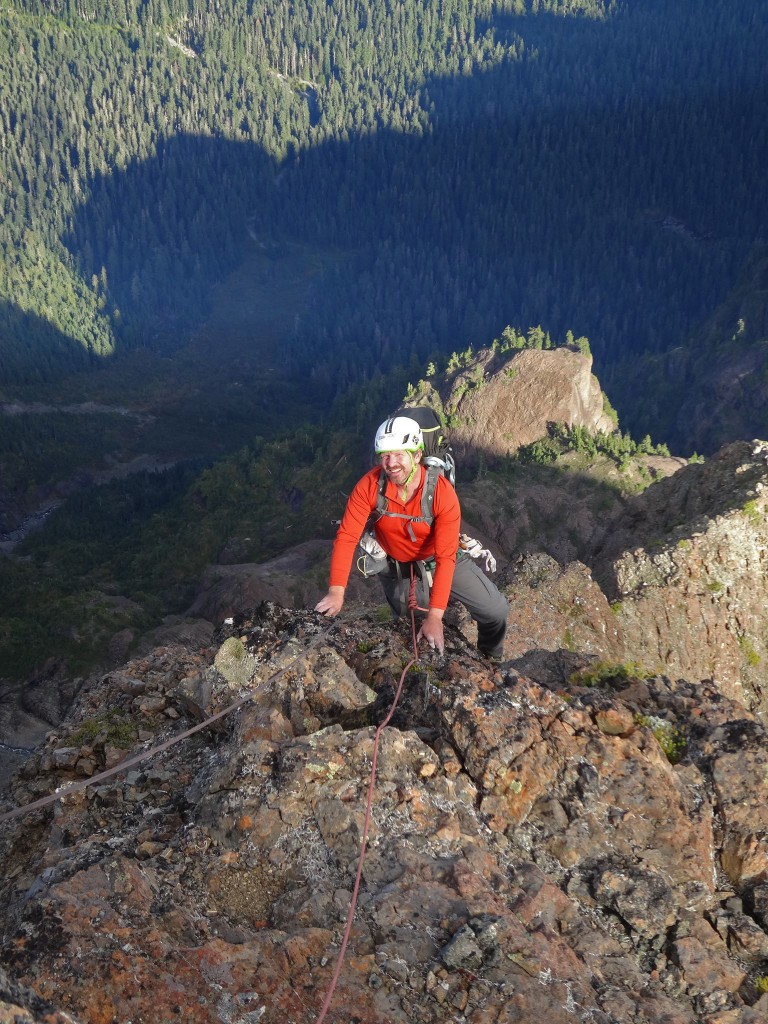As 2014 drew to a close I was scrambling to complete and publish a new guidebook – Island Alpine Select. The need for this new work was two-fold, maybe three-fold… For starters the 2003 print run of the original Island Alpine first edition was nearly all sold with just a few hundred copies of 5,000. I heard somewhere that in Canada selling five thousand books amounts to a bestseller but I haven’t been able to confirm that. Secondly in the decade since Island Alpine was published there has been a surge in new alpine routes all over the Vancouver Island mountains and there was a growing appetite from local climbers to see these new routes complied. The third motivator was more of a question of quality. With all the experience I had subsequently gathered since first publishing Island Alpine I knew that a new edition could be so much better: I wanted to improve the layout, print in full colour, add more detailed maps and enhance the climbing route descriptions.
Island Alpine was the first comprehensive climbing guidebook to the mountains of Vancouver Island and Strathcona Park. It describes over 275 mountains, with more than 550 photographs showing the hiking, scrambling and rock and ice climbing routes on each of these peaks. Although I reluctantly admit there are some short-comings with the production (I was never happy with how dark many of the photographs turned out) the book has served the Vancouver Island community for 10 years and was instrumental in opening the door on what was previously a really little known mountain range.
Preparing the new edition was both exciting, nerve-racking and very time-consuming but one of the very best aspects of all my guidebook projects is the many trips into the backcountry mountains or coastlines to research the routes and gather the information and photography. Insomuch as Island Alpine has been basically my life’s work this new edition was going to be the result of over 20 years in the Vancouver Island Alps.
For the first, original edition many of the older route descriptions were especially brief and unverified. But as most of those were climbs of the more obvious and aesthetic mountain features – the main ridges and couloirs, these has now become the local ‘classics’ and not only had they become relatively popular but as a result there was a lot more information available about the. What originally were short, single paragraph notes in old club newsletters were now written up in blog posts and discussed in online forums adding greatly to the overall knowledge base.
Now too where in the past my own climbing had drawn me to uncharted ground, climbing many new routes, I realized that I needed firsthand information and especially suitable photographs of many of the classics. So my wife Renée and I embarked on a steady campaign over three summers to climb many of the popular routes.
Another big change facing me with a new edition was that in 2003 for the first edition I was working with black and white scans of slides. Now though expectations and my own desire for improved quality was going to demand improvements. Digital photography has been a boon to my self-publishing projects because it has cut out hours of work wading through pages of slides and the slow process of scanning them. Just being able to take so many photographs of the peaks and climbers has vastly increased my image library helped along by a better understanding of what types of image framing, light and angle works best to illustrate each mountain and/or route.
Gradually through the late summer of 2014, Island Alpine Select was taking shape. The new edition would cover 75 mountain peaks of the 275 described in the first edition. This was because there were many non-technical peaks where the information for straight-forward hiking ascents hadn’t changed. But the page count of both books was going to end up being quite similar – a testament to how more in-depth the information was to be.
By September though I was still working in a black and white layout. I polled some of the local climbing community through an online forum to ask what they felt about a black and white guidebook versus full colour? The response was overwhelmingly in favour of full colour which gave me a bit of a start! Luckily I had been preparing all the photographs in colour anyway for an eBook edition so it was an easy if time-consuming job to make CMYK copies of these and begin to convert the whole layout to colour. With my press date already set in late October to ensure delivery for Christmas sales the pressure started to build. As a confirmed procrastinator I seem to thrive under the pressure of deadlines and I’m sure this is one of the reasons that publishing is such a good fit for me as a profession. There must be a variation on that saying “don’t do today when you have deadline tomorrow” or something to that effect!
All in all when the final product was delivered I was over-joyed. It’s inevitable that some of the first things a writer/publisher notices are the mistakes but over the years I’ve become toughened by that and it’s easy enough to post corrections online where the right information is important to the detail.
With Island Alpine Select in print I’m focusing attention on a hiking guidebook to Strathcona Park. It will be great to parlay the new and improved skills employed with IAS to this project which I anticipate will be warmly received.


